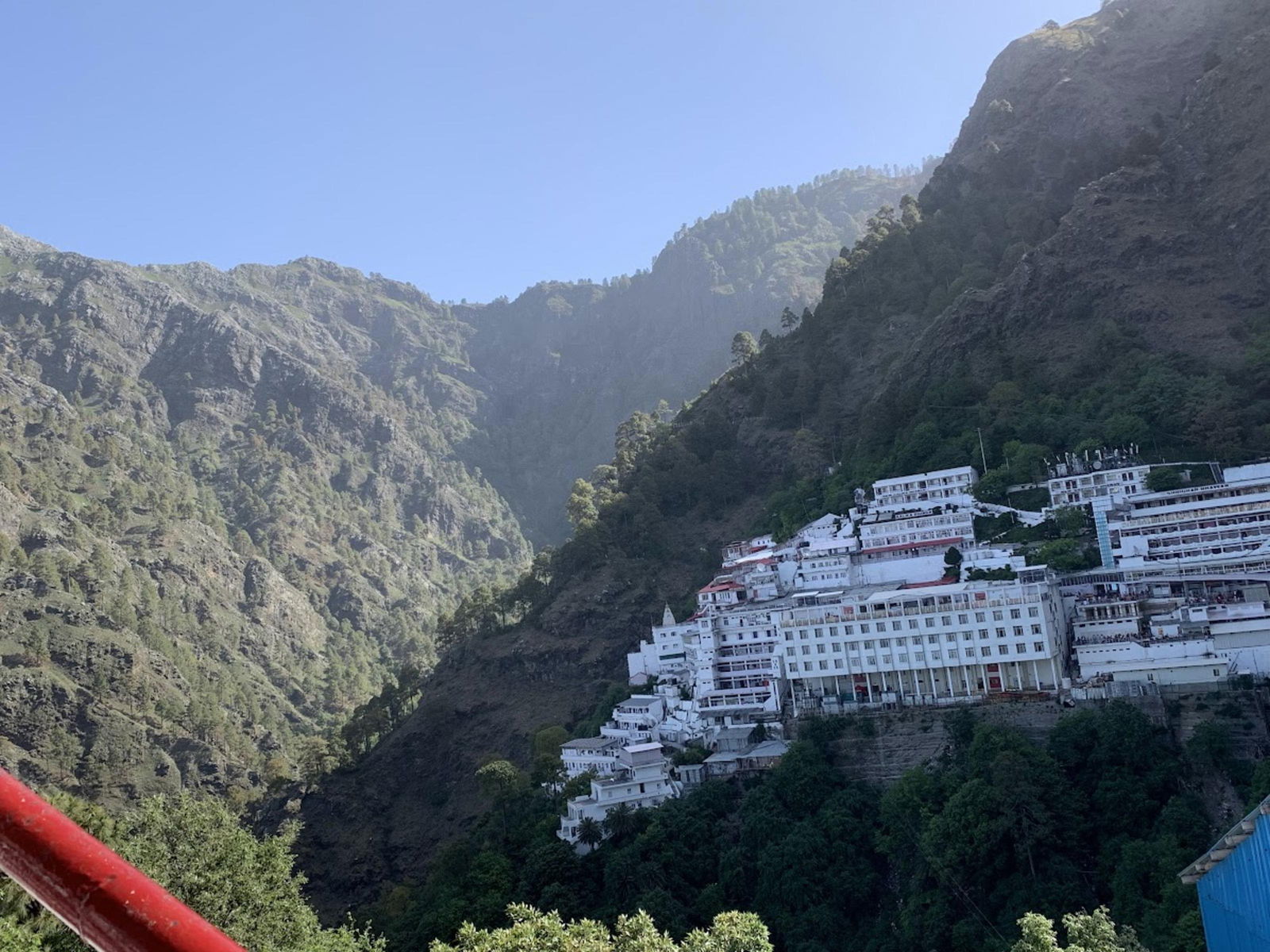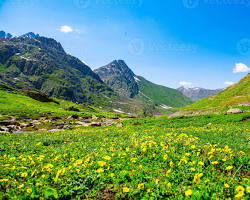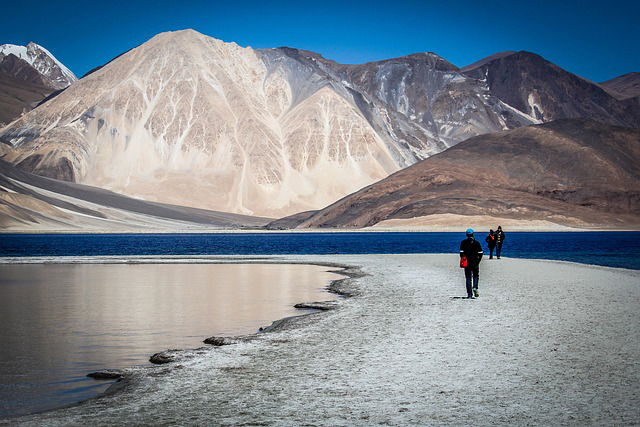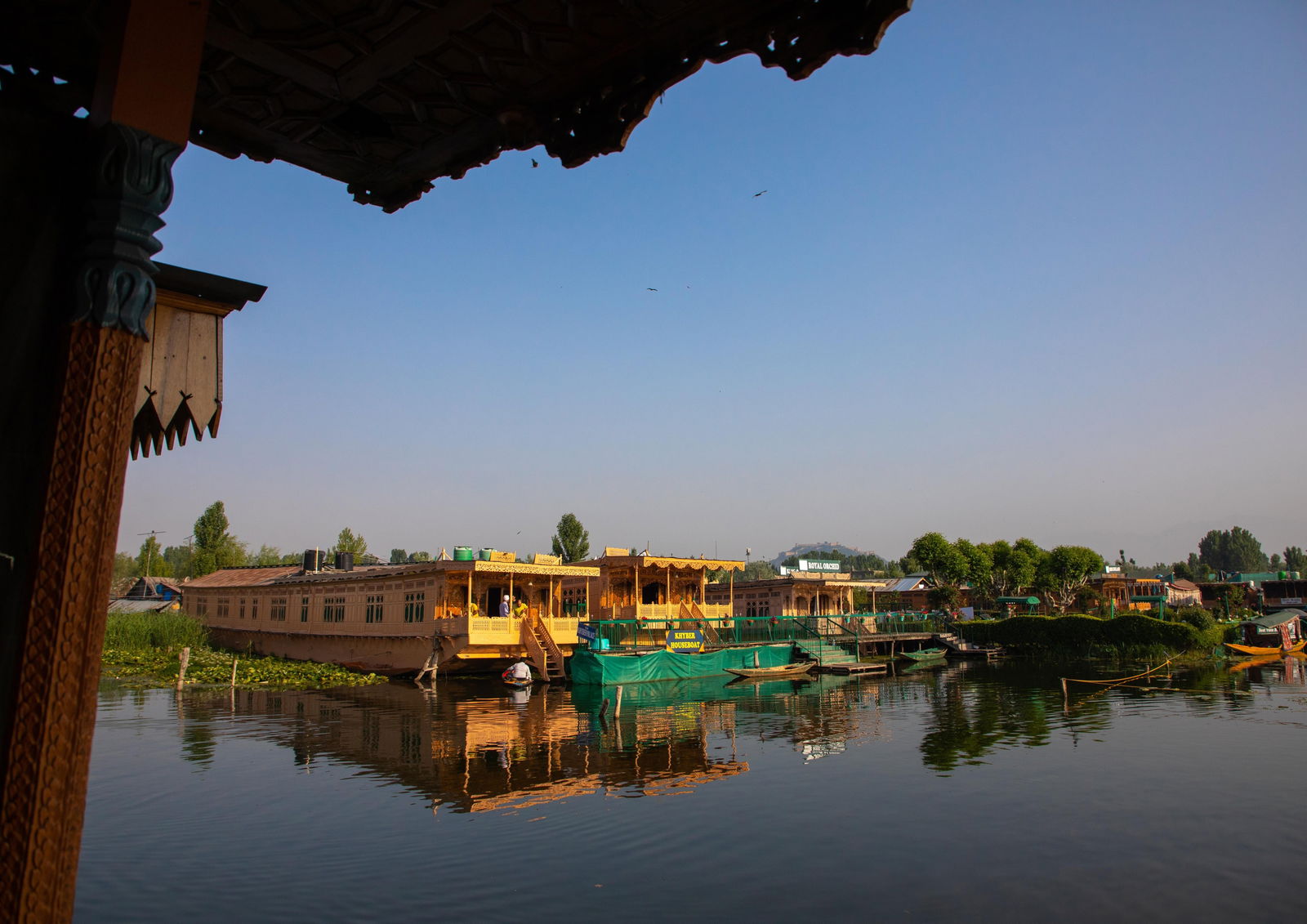
Location: The temple is situated at an altitude of approximately 5,200 feet (1,584 m) above sea level in the town of Katra, near Jammu.
The Pilgrimage (Yatra): The journey to the temple involves a trek of about 12 kilometers (7.5 miles) from the base camp at Katra. Millions of pilgrims undertake this journey annually, making it one of the most visited pilgrimage centers in the world.
The Holy Cave: The shrine is a natural cave where the Goddess, in her three forms (Pindis) - Mata Mahakali, Mata Mahalakshmi, and Mata Mahasaraswati - is worshipped. The three Pindis represent the three manifestations of the Goddess.

Scenery: It is famous for its stunning natural beauty, characterized by rolling hills, majestic Himalayan peaks (especially the Kolhoi Peak), and thick forests of pine, fir, and birch. The name "Meadow of Gold" is believed to be derived from the gold-like shimmer of the green grass in the spring or the fields of yellow crocus flowers that bloom in the area.
The Sindh River: The valley is traversed by the Sindh River, which is a significant tributary of the Jhelum River. The river is known for trout and mahseer fishing and enhances the picturesque quality of the landscape.
Gateway to Ladakh: Sonmarg is the gateway to the Ladakh region. The famous Zojila Pass, which connects Kashmir to Ladakh, is just beyond Sonmarg.
Major Attractions: A primary attraction is the Thajiwas Glacier, easily accessible via a short trek or a pony ride from the town. Sonmarg is also the starting point for treks to high-altitude lakes like Vishansar Lake, Krishansar Lake, and Gangabal Lake.

Geography and Landscape: Ladakh is situated in the Himalayan and Karakoram mountain ranges, making its geography extremely rugged and high-altitude. The landscape is characterized by barren brown and purple mountains, deep valleys, high-altitude passes, and glacial rivers like the Indus. The thin air and high elevation contribute to the region's cold desert climate.
Culture: The dominant culture is Tibetan Buddhist, giving rise to its nickname "Little Tibet." The region is dotted with spectacular, centuries-old monasteries (gompas) such as Thiksey, Hemis, and Lamayuru, which are integral to the local lifestyle.
Capital and Major Towns: The largest town and traditional capital is Leh, which serves as the primary hub for tourism and administration. Other major areas include Kargil and the picturesque Nubra Valley.
Major Attractions:
Pangong Tso: A stunning high-altitude lake known for its shifting blue colors.
Khardungla Pass: Once reputed to be the world's highest motorable pass (though this claim is now contested).
Nubra Valley: A tri-armed valley famous for its sand dunes and double-humped Bactrian camels.

Dal Lake: The most iconic feature of Srinagar is Dal Lake, often called "Srinagar's Jewel." The lake is home to a unique community living on or around its waters. Tourists stay in beautifully carved houseboats and travel across the lake in small wooden boats known as Shikaras.
Mughal Gardens: Srinagar is famous for the stunning Mughal Gardens, which were laid out during the Mughal era. These include Shalimar Bagh, Nishat Bagh, and Chashme Shahi, all designed in the Persian style with beautiful terraced lawns, cascading fountains, and flowery beds.
The Jhelum River: The city is situated on the banks of the Jhelum River, which flows through the valley.
Local Craftsmanship: Srinagar is a hub for Kashmiri handicrafts, including Pashmina shawls, carpets, wood carving, and traditional silver and copperware.

Location: It is situated approximately 62 km from Jammu city and is fringed by forest-covered hills of the Shiwalik range.
Significance: Mansar is considered a holy site and shares the legend and sanctity of the much larger Lake Manasarovar in Tibet. It is a popular destination for both tourism and pilgrimage.
Ramsar Site: The Mansar-Surinsar complex, which includes the nearby Surinsar Lake (often referred to as its twin lake), was designated as a Ramsar Convention site in 2005 due to its ecological importance. The surrounding area is part of the Surinsar-Mansar Wildlife Sanctuary.
Religious Importance:
On the eastern bank of the lake is a prominent shrine dedicated to Sheshnag, the mythical serpent god with six heads. Newlyweds consider it auspicious to perform three circumambulations (Parikrama) around the lake to seek his blessings.
Ancient temples dedicated to Umapati Mahadev, Narasimha, and Durga are also situated in the vicinity.
Many Hindu communities perform the Mundan ceremony (first haircut) of their male children here.
Mythology links the lake's origin to the Mahabharata, involving the warrior Babruvahana, the son of Arjuna.
Tourism: The lake is a tranquil spot offering a paved walkway all around its perimeter, allowing visitors to enjoy the scenery and observe the fish and turtles (turtles are a notable feature of the lake). Boating (paddle and row boats) facilities are available for tourists.

Altitude and Scenery: Located at an altitude of approximately 2,024 meters (6,640 feet), Patnitop is famous for its lush green meadows, panoramic views of the Shivalik range, and dense forests dominated by deodar (cedar) and pine trees.
Weather: It is a year-round destination, offering pleasant, cool weather in the summer and heavy snowfall in the winter, which transforms it into a picturesque skiing and winter sports spot.
Activities: The sprawling meadow areas are perfect for picnics and leisurely walks. During winter, it attracts tourists for snow-related activities. The nearby area of Sanasar (known as the satellite resort of Patnitop) is popular for adventure sports like paragliding, rock climbing, and trekking.
Religious Sites: The area is also home to several revered sites, including the Sudh Mahadev Temple and the Naag Mandir, which draw pilgrims.

